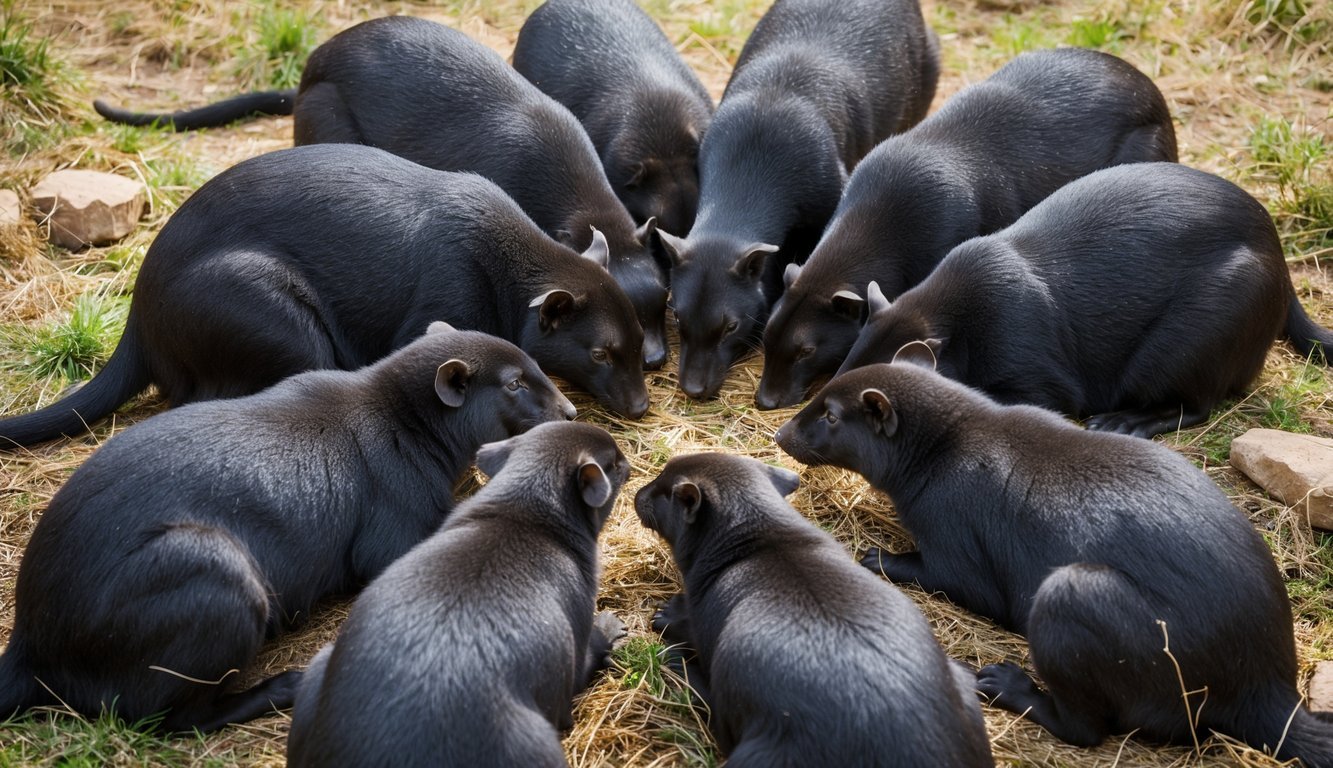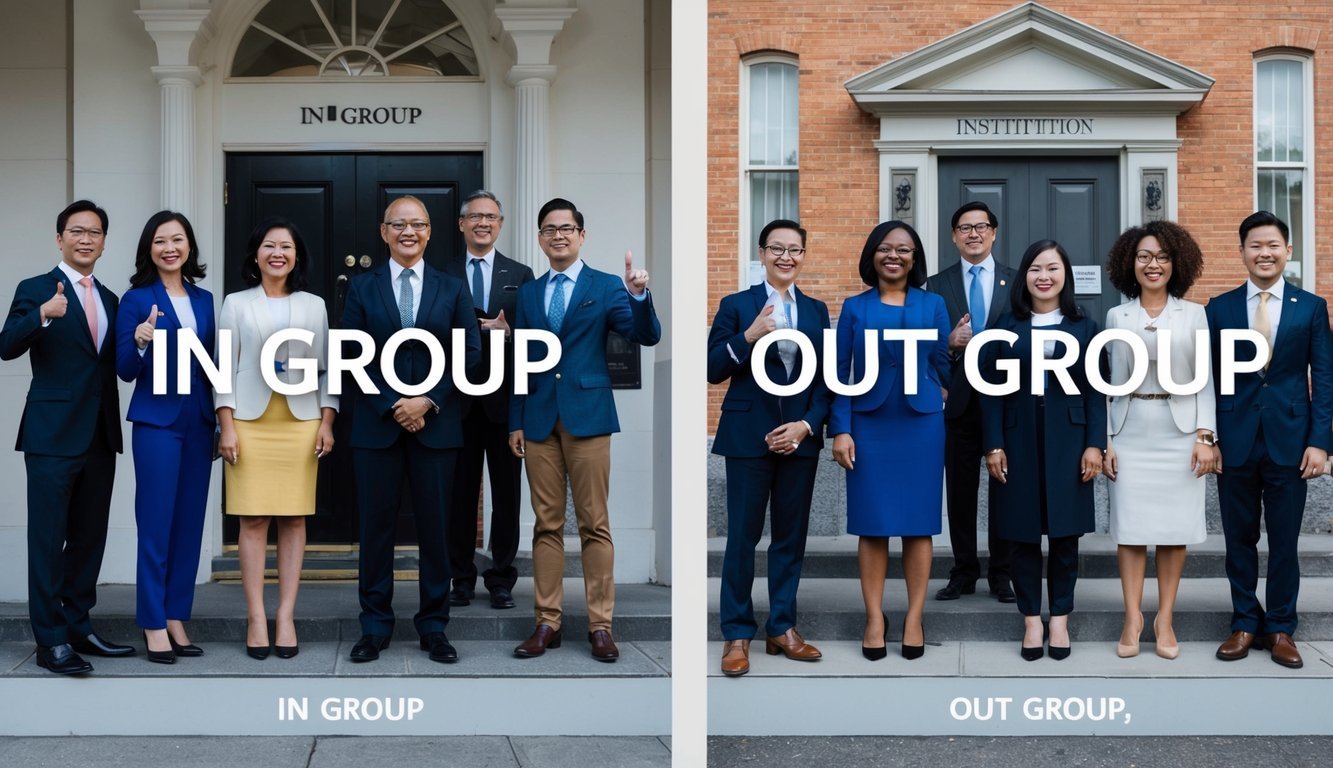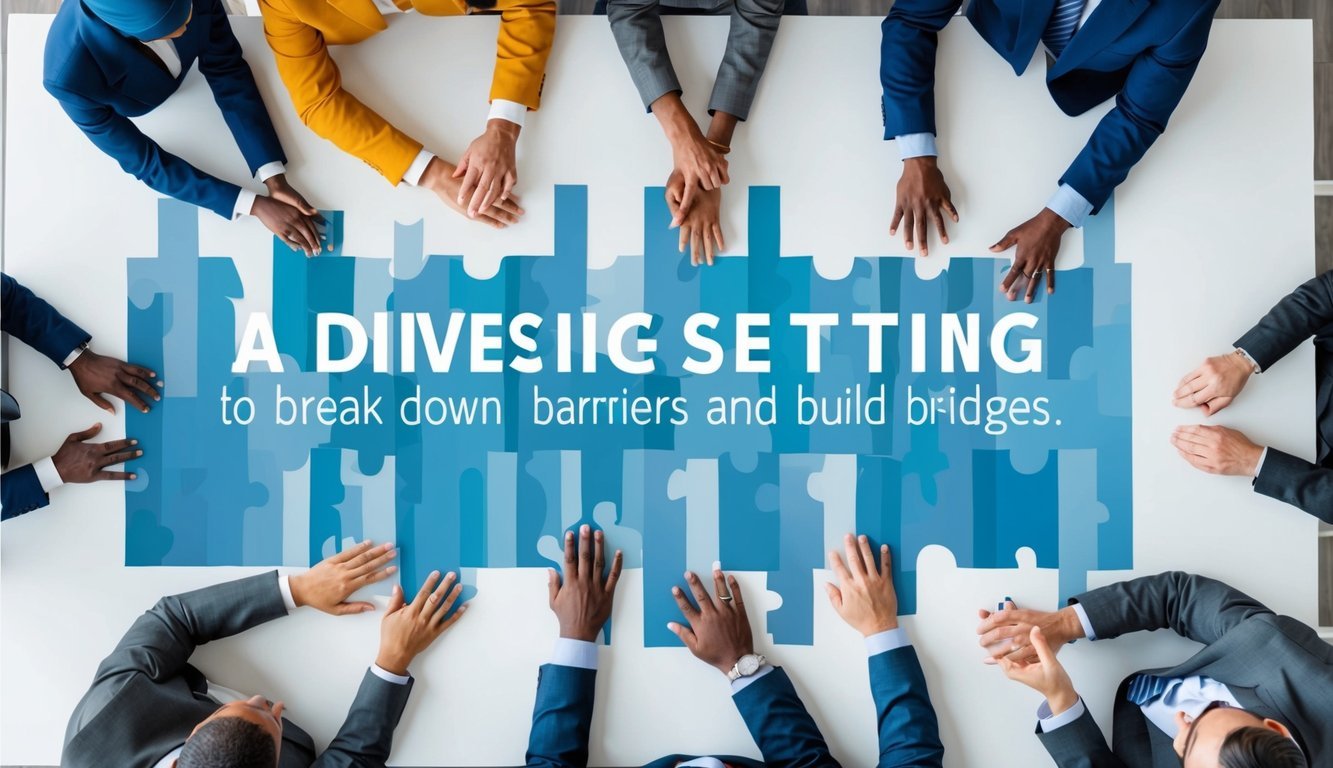PsychNewsDaily Publishers
100 Summit Drive
Burlington, MA, 01803
Telephone: (320) 349-2484
PsychNewsDaily Publishers
100 Summit Drive
Burlington, MA, 01803
Telephone: (320) 349-2484
In-group favoritism influences social dynamics by favoring members of similar groups, affecting trust, cooperation, and institutional effectiveness, while personal and social identities further shape these biases.

The way we favor our own groups shapes so much of society’s challenges and strengths. I’ve found that our identities and the institutions around us play a huge role in how we treat people who are “like us” versus those who aren’t.
In-group bias is basically when we treat people in our own group better than outsiders. It’s like when I root for my hometown sports team no matter how bad they play! This happens because we tend to identify emotionally with our groups, whether they’re based on nationality, religion, or even random assignments.
I notice this all the time at work – people favor their department over others. We’re wired to do this! Research shows that even when groups are created artificially in experiments, people still show favoritism toward their assigned group.
It makes me think about how deeply this bias affects cooperation. Studies have found that we’re more likely to trust and help members of our own group, even when there’s no logical reason to do so.
Social Identity Theory helps us understand why we have these biases. Developed by psychologists Tajfel and Turner, it suggests that part of our self-esteem comes from the groups we belong to. I’ve always wondered why I feel so good when my college team wins even though I didn’t play!
The theory has three main parts: categorization (putting people in groups), identification (feeling part of a group), and comparison (comparing our group to others). When we feel our group is better, our personal self-esteem gets a boost.
This explains why national identification can lead to stronger in-group favoritism. We’re constantly trying to make our social identity positive by seeing our group as better than others. It’s not always about hating other groups – sometimes it’s just about loving our own more!
The cool thing is that these identities are dynamic and can evolve over time, changing how we express our biases.

Institutions play a powerful role in how groups form bonds and show favoritism to their members. I’ve noticed that formal and informal rules create patterns that influence how we interact with people inside and outside our groups.
Strong and fair institutions can actually reduce ingroup favoritism by creating clear rules for everyone. I’ve seen this happen in well-run organizations where people don’t feel they need to rely so much on their personal connections. Trust in institutions is super important here!
In places with weak institutions, people tend to depend more on their immediate social groups. We see this a lot in countries where corruption is common – folks naturally gravitate toward helping “their people” because the system isn’t reliable. This creates what researchers call “particularized trust” rather than “generalized trust.”
I wonder if this is why some organizations struggle with cliques? When formal monitoring is weak, favoritism with socially connected workers becomes more common.
The economic costs of institutional bias can be huge, affecting everything from hiring to resource allocation. When institutions favor certain groups, it creates inefficient outcomes that hurt everyone in the long run.
Companies with strong anti-bias policies tend to perform better because they utilize talent from all groups. I’ve always thought it’s interesting how randomly assigned groups still develop ingroup favoritism, even without historical ties!
Economic research shows that places with higher generalized trust (meaning trust beyond your immediate group) typically have stronger economic growth. It makes me think about how much potential is wasted when institutions reinforce divides instead of bridging them.
When institutional rules shape relations between groups, they can either amplify or reduce natural tendencies toward favoritism.

Social categories shape how we view ourselves and others, creating powerful dividing lines that impact our relationships. The way we sort people into “us” versus “them” affects everything from personal biases to institutional structures.
I’ve always been fascinated by how quickly we sort people into groups. It’s almost automatic! Social categorization happens when we mentally place individuals into groups based on shared traits like race, gender, or even something as simple as shirt color. What’s really interesting is that minimal groups can trigger these responses – meaning even tiny, meaningless differences can make us favor our own group.
The emotional significance we attach to these categories is what makes them so powerful. When we identify strongly with a group, we tend to show ingroup favoritism, giving preferential treatment to “our people.” It makes me think about how these seemingly innocent preferences can snowball into serious social divisions.
Group identity becomes tied to our self-concept. I’ve noticed how institutions often reinforce these categories, making them seem more natural and permanent than they actually are. This categorization process forms the foundation for both cooperation within groups and potential conflict between them.
Researchers have developed clever ways to measure how we behave toward different groups. One approach I find particularly interesting uses minimal group paradigms where participants are divided based on trivial differences, yet still show bias toward their assigned group.
These studies reveal that social categorization can be a sufficient condition for intergroup bias. We don’t need actual conflicts of interest to prefer our ingroup – just the mere awareness of different categories! But there’s more to it than simple favoritism. The story gets complicated when we look at how these biases manifest in real-world settings.
Intergroup dynamics range from “relatively innocuous ingroup favoritism” to more harmful discrimination. Recent meta-analysis studies show these biases affect cooperation levels, with people generally expecting more cooperation from their ingroup members. I wonder if understanding these mechanisms might help us design institutions that reduce harmful biases rather than amplify them?

Identity shapes how we favor our own groups in powerful ways. The connection between who we see ourselves as and how we treat others isn’t just academic—it affects our daily choices about who gets our help, trust, and resources.
I’ve noticed that we’re always balancing two parts of ourselves: who we are as individuals and who we are as group members. Social identity (like being part of a community) and personal identity create this interesting dance in our brains.
When our social identity feels important, we tend to show more favoritism toward our in-groups. It’s like when I wear my favorite team’s jersey—suddenly everyone else in the same colors feels like family! This happens because we tie our self-worth to our group’s status.
But here’s the weird thing: sometimes personal identity can override group biases. Research shows that when people feel personally threatened, they might actually reduce their in-group favoritism rather than increase it. I wonder if that’s why some folks break away from their community’s norms?
Race and ethnicity create some of the strongest in-group connections we experience. These identity markers can trigger automatic favoritism that we don’t even realize we’re showing.
Studies show that even when groups are randomly assigned, people develop strong in-group preferences. But with racial and ethnic groups, these biases often come with deep historical and emotional baggage. It makes me think about how much of my own sense of belonging is tied to my cultural background.
The emotional significance we attach to our ethnic identity can strengthen or weaken our bias. I’ve seen how positive distinctiveness—feeling good about what makes our group special—sometimes leads to stronger favoritism.
Organizations and workplaces face a real challenge with ethnic bias. When nationality or ethnicity becomes central to identity formation, it can create invisible barriers that affect who gets hired or promoted.

Getting past our natural tendency toward in-group favoritism isn’t easy, but there are practical steps institutions can take. I’ve found that addressing bias requires both personal awareness and structural changes to how organizations operate.
When I think about overcoming bias, I wonder if we’re fighting against human nature itself sometimes. We’re kinda hardwired for in-group favoritism, but that doesn’t mean we can’t change. Simple awareness training about implicit bias helps, but it’s not enough on its own.
Diverse teams make a huge difference! When people from different backgrounds (age, gender, religion) work together regularly, those old biases start breaking down. I’ve seen it happen.
Cross-group projects are super effective too. When you’re forced to collaborate across traditional boundaries, you start seeing the trustworthiness and intelligence of people you might have dismissed before.
Accountability systems matter a lot. Some folks argue that competitive markets can overcome bias, but I’m not convinced that’s reliable without clear metrics and consequences for favoritism.
Honestly, it makes me think we need to redesign our institutions from the ground up sometimes. Transparent hiring and promotion processes are absolutely critical – when everything happens behind closed doors, that’s when favoritism thrives.
Creating spaces that meet everyone’s basic needs is important too. This might mean prayer rooms for different faiths, accessible facilities, or flexible schedules that accommodate diverse life situations.
I’ve found that mentorship programs work wonders, especially when they’re designed to foster inclusive interactions. When experienced members help newcomers navigate institutional culture, it breaks down that insider/outsider dynamic that feeds favoritism.
Regular training on cultural competence helps combat ethnocentrism, but it has to be ongoing – not just a one-time workshop that everyone forgets about next week. Social identity theory shows us that we need constant reminders about our biases.

In-group favoritism shows up in many places, from offices to schools. I’ve collected some common questions about how institutions keep these practices going and what we can do about them. Let’s explore the connection between our social groups and the organizations we build.
Societies maintain in-group favoritism through both formal and informal rules. I think it’s fascinating how cultural norms can make treating your own group better seem totally normal.
When formal institutions for monitoring favoritism are weak, people often feel more comfortable giving advantages to their own group. It’s like when nobody’s watching, we drift toward helping “our people.”
Social connections play a huge role too. In neighborhoods where trust is limited to small groups, I’ve noticed that in-group favoritism tends to be higher.
Institutions can actually make in-group bias worse by creating structures that reward it. Think about how universities sometimes hire. When deans require professors to write comments about candidates, it opens the door for personal connections to influence decisions.
Organizations often develop unwritten rules that everyone just accepts. I’ve seen places where promotions always seem to go to people from certain backgrounds, and nobody even questions it anymore.
Sometimes institutions create literal groups – like committees or teams – that develop their own identity and start favoring each other. It’s sorta like how cliques form, but with official backing.
In-group favoritism can change as institutions grow and evolve. I’ve watched organizations that started with strong favoritism gradually shift as they became more diverse and global.
External pressures like competition or regulation can force institutions to reduce favoritism. When a company needs the best talent to survive, they might start caring less about who’s in the “in-group” and more about actual skills.
Changes in leadership often create dramatic shifts. A new boss might bring different values or belong to different social groups, which reshuffles who’s “in” and who’s “out.” I wonder if that’s why leadership transitions can be so tense sometimes?
Yes, researchers can measure in-group favoritism through controlled experiments. Some studies use economic games where participants make choices about sharing resources with people from their own group versus others.
Employment data can reveal patterns too. Looking at who gets hired, promoted, or given raises can show if certain groups receive preferential treatment. I’ve seen studies that track these numbers over years to find the hidden biases.
Surveys and interviews help capture personal experiences with favoritism. When people are asked directly about preferential treatment of relatives, friends, neighbors or acquaintances, they often reveal surprising insights.
Blind review processes help reduce favoritism in decision making. I love how some organizations remove names and personal details from applications or proposals so reviewers can’t tell who’s who.
Diverse committees and leadership teams can counterbalance individual biases. When people from different backgrounds make decisions together, it’s harder for any single group’s favorites to dominate.
Clear metrics for evaluation make favoritism harder to justify. If everyone knows exactly what “good performance” looks like, it’s tougher to just pick your friends. Some companies have really improved by setting specific goals instead of vague standards.
Social identity theory explains why we favor our own groups. It’s about how we partly define ourselves through group membership. Institutions often strengthen this by creating formal and informal group identities.
When organizations create strong team identities, they sometimes accidentally increase preferences for in-group members. I’ve noticed this happens a lot in competitions between departments or divisions.
Institutions that recognize how social identity works can design better structures. By creating identities that cross traditional boundaries (like cross-functional teams), some smart organizations reduce the negative effects of us-versus-them thinking.